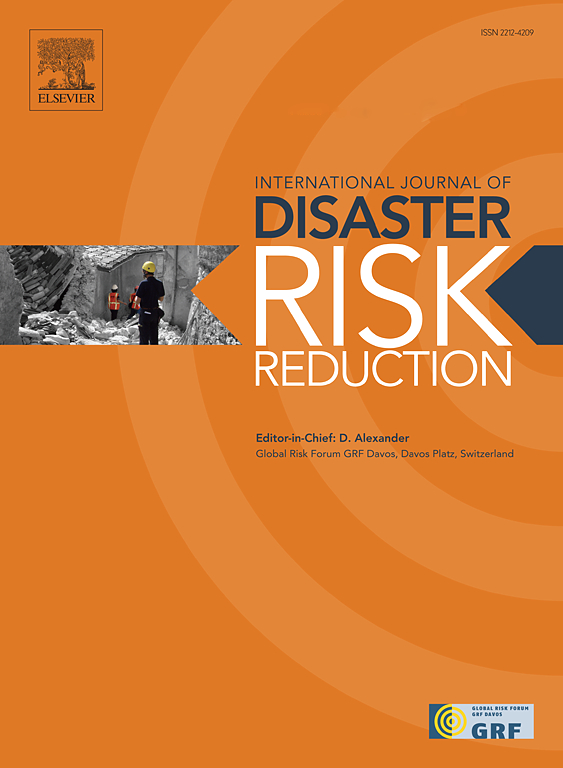墨西哥城医疗基础设施在 1985 年 9 月 19 日和 2017 年地震中的抗震性能和恢复情况
IF 4.5
1区 地球科学
Q1 GEOSCIENCES, MULTIDISCIPLINARY
International journal of disaster risk reduction
Pub Date : 2024-10-15
DOI:10.1016/j.ijdrr.2024.104886
引用次数: 0
摘要
迄今为止,1985 年 9 月 19 日米却肯州地震(Ms = 8.1)和 2017 年 9 月 19 日普埃布拉-莫雷洛斯州地震(Mw = 7.1)是墨西哥城破坏性最大的地震事件。在 1985 年的地震中,13 座重要的公立医院建筑倒塌或被拆除,损失了 5800 张病床。在 2017 年的地震中,医疗部门的 85 栋建筑受到干扰,两家大型公立医院被拆除,1147 张病床受到影响。在本文中,作者既集中回顾了 1985 年地震中发生的情况,也报告了 2017 年地震中观察到的情况。从结构的角度来看,所观察到的破坏与以下方面的关系进行了讨论:a) 地震规范;b) 频谱需求;b) 结构不规则性;c) 土壤沉降;d) 倾斜;e) 结构冲击;f) 退化。观察到的受损建筑物数量还与墨西哥城现有医疗设施的大致数量相关。对该部门抗震能力的瞬时下降进行了粗略评估。最后,讨论了恢复过程或适应性恢复能力的进展情况。幸运的是,墨西哥城的大多数主要医院都没有受到严重破坏,这也是为什么在 2017 年地震之前,墨西哥城的大多数医院和病床容量都能及时恢复,以应对自 2020 年初开始影响墨西哥的 Covid-19 大流行病。本文章由计算机程序翻译,如有差异,请以英文原文为准。
Seismic performance and recovery of medical infrastructure in Mexico City related to the September 19, 1985 and 2017 earthquakes
To date, the September 19, 1985 Michoacán (Ms = 8.1) and the September 19, 2017 Puebla-Morelos (Mw = 7.1) earthquakes have been the most devastating seismic events in Mexico City. During the 1985 earthquake, 13 important public hospital buildings collapsed or were demolished and 5800 hospital beds were lost. During the 2017 earthquake, 85 buildings of the medical sector were disturbed, two major public hospital were demolished and 1147 hospital beds were affected. In this paper, the author concentrates both in reviewing what occurred during the 1985 earthquake, and in reporting what it has been observed for the 2017 earthquake. From the structural viewpoint, the observed damage is discussed in relationships to: a) seismic codes, b) spectral demands, b) structural irregularities, c) soil settlements, d) tilting, e) structural pounding and, f) deterioration. The observed damaged inventory is also put into perspective with respect to the approximate number of medical facilities that are available in Mexico City. An instantaneous drop of seismic resilience for this sector is crudely assessed. Finally, the progress on the recovery process or adaptive resilience is discussed. Fortunately, most of the main hospitals in Mexico City were not severely damaged, and that it was why most of them and the hospital bed capacity in Mexico City previous to the 2017 earthquake was able to be recovered on time to attend the Covid-19 pandemic which affected Mexico since early 2020.
求助全文
通过发布文献求助,成功后即可免费获取论文全文。
去求助
来源期刊

International journal of disaster risk reduction
GEOSCIENCES, MULTIDISCIPLINARYMETEOROLOGY-METEOROLOGY & ATMOSPHERIC SCIENCES
CiteScore
8.70
自引率
18.00%
发文量
688
审稿时长
79 days
期刊介绍:
The International Journal of Disaster Risk Reduction (IJDRR) is the journal for researchers, policymakers and practitioners across diverse disciplines: earth sciences and their implications; environmental sciences; engineering; urban studies; geography; and the social sciences. IJDRR publishes fundamental and applied research, critical reviews, policy papers and case studies with a particular focus on multi-disciplinary research that aims to reduce the impact of natural, technological, social and intentional disasters. IJDRR stimulates exchange of ideas and knowledge transfer on disaster research, mitigation, adaptation, prevention and risk reduction at all geographical scales: local, national and international.
Key topics:-
-multifaceted disaster and cascading disasters
-the development of disaster risk reduction strategies and techniques
-discussion and development of effective warning and educational systems for risk management at all levels
-disasters associated with climate change
-vulnerability analysis and vulnerability trends
-emerging risks
-resilience against disasters.
The journal particularly encourages papers that approach risk from a multi-disciplinary perspective.
 求助内容:
求助内容: 应助结果提醒方式:
应助结果提醒方式:


